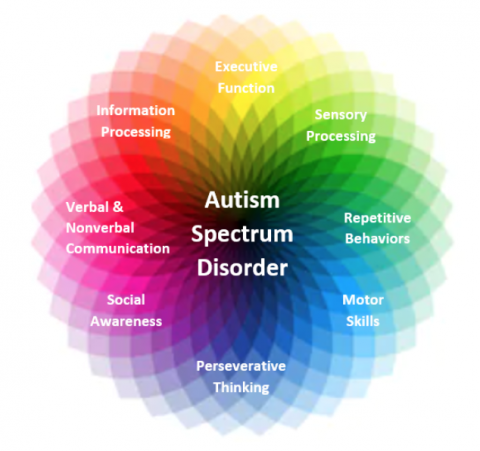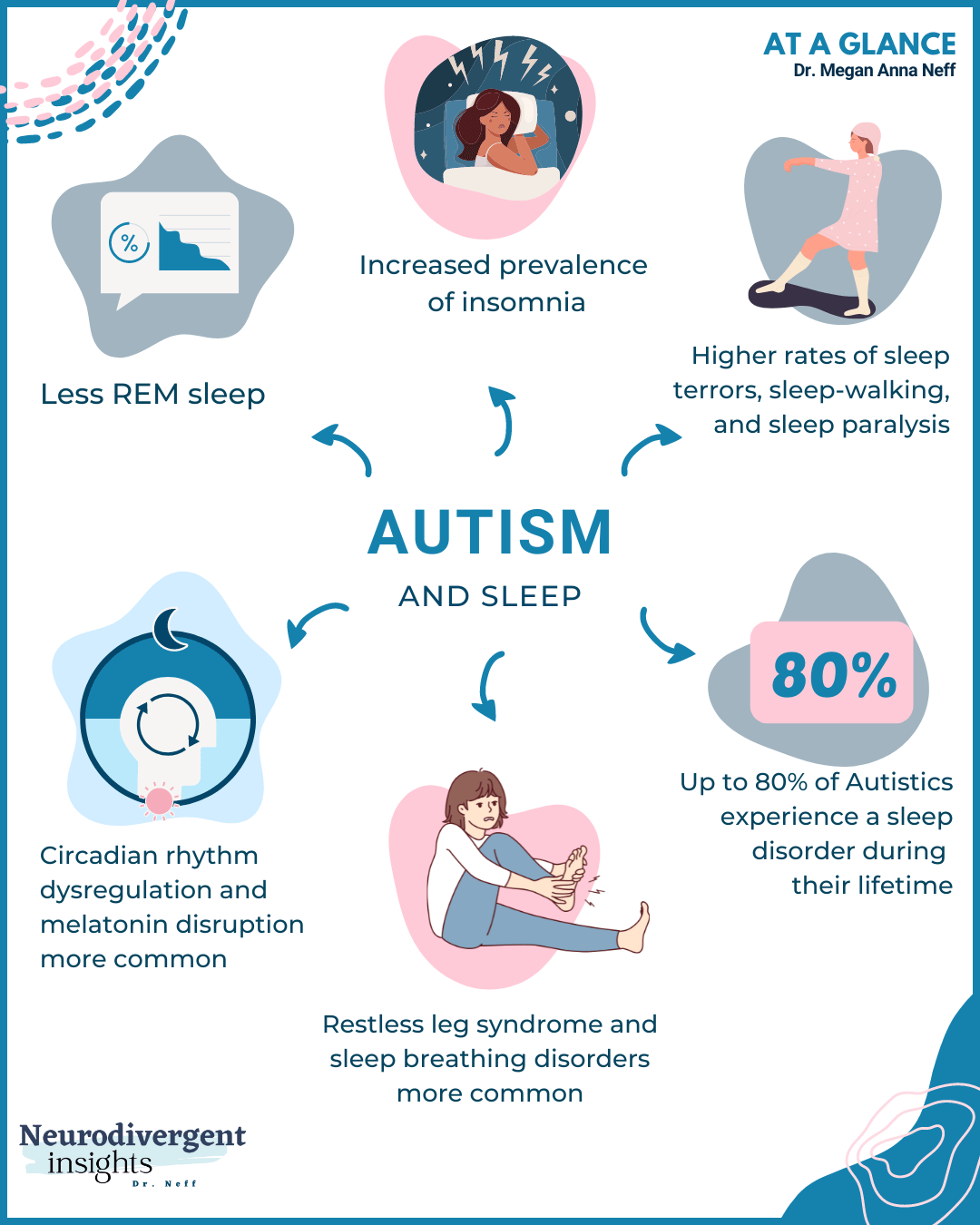Autism and Sensory Handling: Exploring the Connection and Its Results
Autism and Sensory Handling: Exploring the Connection and Its Results
Blog Article
Understanding Autism: A Comprehensive Overview to Signs and indicators
Autism Spectrum Problem (ASD) incorporates a large range of attributes that can substantially impact a person's social interactions and day-to-day functioning. Identifying the symptoms and indicators, such as challenges with eye get in touch with, social interaction problems, and sensory level of sensitivities, is important for very early intervention. Comprehending these subtleties not only help caretakers and educators in supplying appropriate support yet also fosters a much more comprehensive environment for individuals with ASD. As we check out the intricacies of autism, it becomes important to take into consideration how these indications show up differently across the range and what effects they hold for effective intervention methods.
Overview of Autism Spectrum Disorder
Defining Autism Range Problem (ASD) entails identifying it as an intricate neurodevelopmental problem identified by a variety of difficulties in social communication, interaction, and behavior patterns. The term "spectrum" shows the broad variability in symptoms and their severity, which can differ significantly from one person to an additional. ASD commonly shows up in very early youth, although some individuals might not obtain a medical diagnosis till later in life.
Elements influencing the development of ASD consist of ecological variables and genetic predispositions, although the exact reasons stay under investigation. Medical diagnosis usually counts on behavioral analyses, as there are no clear-cut clinical tests for ASD. Early intervention is critical and can dramatically enhance outcomes, concentrating on improving communication abilities, social interactions, and adaptive actions.
People with ASD might additionally exhibit one-of-a-kind strengths, such as extraordinary interest to detail or details areas of knowledge. Recognizing the complex nature of ASD is essential for promoting a comprehensive environment that fits neurodiversity. Proceeded research is important for creating reliable treatments and assistance systems, making it possible for individuals with ASD to flourish and fulfill their prospective within culture.
Common Indications of Autism
Identifying the common indications of Autism Range Disorder (ASD) is crucial for very early recognition and intervention. These indications can differ widely in intensity and discussion, but specific attributes are regularly observed in individuals with ASD.
One of the most widespread signs is a marked difficulty in establishing and maintaining eye contact. Individuals may likewise display minimal interest in social interactions and reveal a choice for singular play.
Sensory level of sensitivities are also typical; individuals may underreact or overreact to sensory stimuli, such as textures, lights, or sounds. autism. Language development can be atypical, with some youngsters showing postponed speech or using language in unusual ways, including echolalia-- repeating sentences or phrases heard somewhere else
It is necessary to keep in mind that not every person with ASD will display all these signs, and the level of these behaviors can vary dramatically. Early acknowledgment permits timely support and sources, improving the lifestyle for those on the spectrum.
Social Communication Obstacles
Social interaction challenges are a hallmark of Autism Range Condition (ASD), impacting a person's capability to engage effectively with others. These troubles can materialize in different ways, consisting of difficulties in launching and preserving discussions, comprehending social signs, and responding suitably in social interactions.
People with ASD may fight with nonverbal communication, such as eye call, facial expressions, and body language. This can bring about misunderstandings, as their communicative intent might not be correctly analyzed by others. They might find it tough to realize the nuances of tone and context, which are necessary for reliable communication.
In team setups, individuals with ASD may really feel overloaded and might not recognize just how to join in conversations (autism). They may additionally show atypical conversational patterns, such as see this website monologuing regarding certain passions without recognizing social reciprocity
Furthermore, these obstacles can result in social isolation or problems in developing connections, as peers might misunderstand their behavior or communication style. Comprehending these social communication difficulties is critical for cultivating supportive environments that promote social skills development and enhance the high quality of interactions for individuals on the autism spectrum.
Sensory Sensitivities and Actions
Several people with Autism Range Problem (ASD) experience enhanced sensory level of sensitivities that can dramatically influence their every day lives. These level of sensitivities might materialize as over-responsiveness or under-responsiveness to sensory stimuli, including sounds, lights, textures, tastes, and scents. For circumstances, an individual with ASD might discover daily noises, such as a vacuum or crowded environments, extremely traumatic, bring about anxiousness or crises. Conversely, some might display an indifference to pain or extreme temperature levels, which can present security concerns.
Sensory processing distinctions in individuals with ASD can additionally impact their ability to involve in social interactions and regular activities. A kid that is sensitive to touch might resist physical love or avoid specific clothing textiles. A choice for certain structures or tastes can limit dietary alternatives and create difficulties throughout mealtimes.
Comprehending these sensory level of sensitivities is crucial for recognizing the distinct experiences of individuals with ASD. Understanding of their sensory accounts can cultivate far better interaction and assistance strategies, creating an environment that accommodates their needs and enhances their lifestyle. Eventually, acknowledging sensory sensitivities is an important part of understanding the wider range of autism.

Supporting Individuals With Autism
Efficient assistance for individuals with Autism Spectrum Condition (ASD) is critical for enhancing their general wellness and cultivating independence. Support methods ought to be tailored to fulfill the unique needs of each individual, considering their obstacles and strengths.

Social skills training can likewise play an essential duty. autism. Involving people in team tasks or role-playing circumstances can enhance their ability to navigate social interactions. Furthermore, it is vital to enlighten member of the family, caretakers, and peers concerning ASD to cultivate a comprehensive and encouraging area
Verdict
In verdict, a thorough understanding of Autism Range Problem is crucial for identifying its signs and symptoms and indicators. Early recognition of typical qualities, such as social communication challenges and sensory level of sensitivities, makes it possible for caretakers and teachers to implement reliable treatments. By promoting improved communication and social abilities, people with autism can navigate their environments extra efficiently. Eventually, enhanced awareness and assistance can substantially improve the quality of life for those influenced by ASD.
Autism Range Condition (ASD) encompasses a large range of features that can substantially impact a person's social interactions and everyday functioning.People with ASD may Continue battle with nonverbal communication, such as eye get in touch with, facial expressions, and body language.Lots of individuals with Autism Spectrum Problem (ASD) experience increased sensory level of sensitivities that can considerably influence their daily lives.Sensory handling differences in find out this here people with ASD can additionally impact their capacity to engage in social communications and regular activities.Comprehending these sensory level of sensitivities is vital for identifying the unique experiences of individuals with ASD.
Report this page